#Inflight Refueling
Explore tagged Tumblr posts
Text
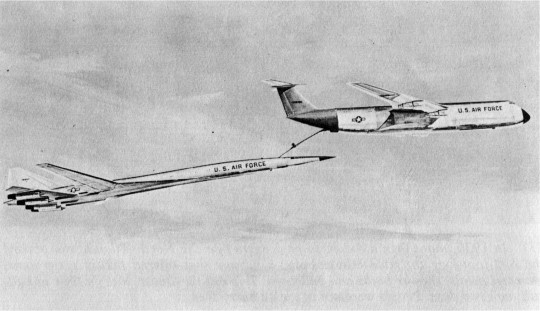
"The SST: Here it comes, ready or not.
Traditionally new transport aircraft have been adapted from military versions for civilian use. But with the US/SST, a switch may give the USAF an Advanced Manned Strategic Aircraft (AMSA) based on a civilian expenditure of billions in research and development funds. Here, Air Force & Space Digest artist Gordon Phillips shows how military SST would look during midair re-fueling operation.
by Don Dwiggins, Doubleday & Company, Inc., 1968"
Artwork by Gordon Phillips
Posted on Flickr by Numbers Station: link
#Boeing 2707-100#Boeing 2707#2707-100#2707#Supersonic Transport#SST#Supersonic Passenger Airliner#Cancelled#Lockheed C-5 Galaxy#C-5#Cargo Plane#United States Air Force#U.S. Air Force#US Air Force#USAF#inflight refueling#1960s#my post
26 notes
·
View notes
Note
86

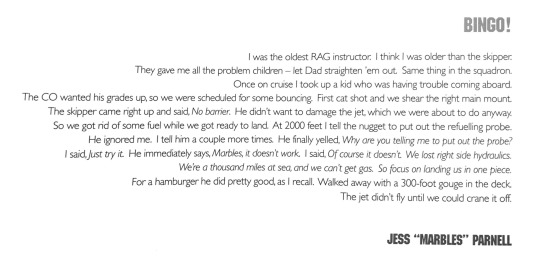
#Grumman F-14 Tomcat Bye-Bye Baby…!#<- find other here#top gun#f-14 tomcat#aviation#F-14 tanks from KS-3 Viking of VS-31 © TOMTWOMEY#KS-3 Viking#inflight refueling#navy#fighter jet#page 86#send me a number 6-200
14 notes
·
View notes
Text

An empty B-58A (aircraft № 16-116) according to March 28, 1969 flight manual, weighs ≈ 58000 lb, essentially the same as the 57916 lb given in Jay Miller's book.
Max take-off weight: 163000 lb (limited by landing gear).
Max inflight weight: 176890 lb (after aerial refueling).
@BaA43A3aHI via X
#b 58 hustler#convair aviation#bomber#aircraft#usaf#sac#mach3#nuclear weapons#aviation#cold war aircraft
42 notes
·
View notes
Text
Single-seat multi-role fighter for export. It is a derivative of the Su-27SK but includes upgrades such as advanced cockpit, more sophisticated self-defense electronic countermeasures (ECM) and an inflight refuelling system.
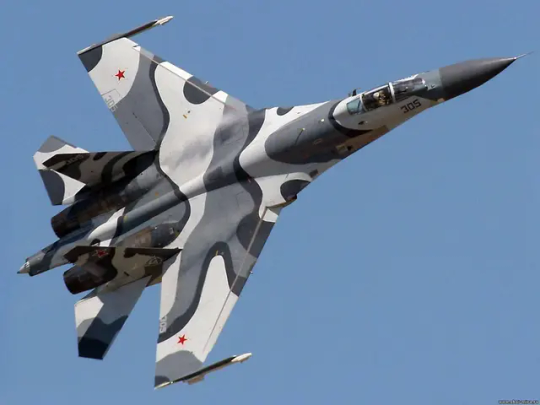
The sole prototype Su-27SMK demonstrator.
27 notes
·
View notes
Video
Those Guys Make Sensitive Operation Mid Air - InFlight Refueling - #Aviation #Fly #AeroArduino
0 notes
Photo

I never knew that X-wings could run on JP-4 jet fuel.
#funny pictures#united states air force#US Air Force#usaf#star wars#X-Wing#t-65#t-65 x-wing#inflight refueling#kc-135#stratotanker#kc-135 stratotanker
17 notes
·
View notes
Photo



11 notes
·
View notes
Text
Fun fact, these are not actually new build 747s that were modified during l assembly like the current Air Force Ones, but existing aircraft that were supposed to go to a Russian airline, but that airline ended up never paying for them so they were repo'd before delivery. Thus, the modifications have been complicated by the fact that they have to rip out the old stuff to put in the new stuff, and it's not going to have stuff like inflight refueling. As to why Boeing got the job, well, probably because they are literally the only American company that can do it, with literally the only plane that fits the requirements. They're not going to let the US President fly in a French plane, and even if they did, they required a four engine aircraft for redundancy and the A380 is just too big for most airports compared to the 747.
So, I had a thought. The planes usually used as Air Force One are modified Boeing 747s, and I was wondering if they'd been affected by the ongoing clusterfuck at Boeing.
Turns out, the US Government is currently in the process of building new Air Force One planes, and guess who got the job?
And as for if they're affected by the ongoing clusterfuck:
According to The Wall Street Journal, the development process has been hit by multiple "production mishaps", including the discovery of empty tequila mini-bottles on one of the aircraft, and the use of jacks that were not rated to support the weight of the aircraft. While the jacking did not result in damage to the planes, "the Pentagon's contractor-management agency formally requested Boeing improve its operations."
...I know people have spoken about the fact that the dropping standards of late-stage capitalism affects products purchased by the rich just as much as products purchased by the poor, but fucking hell they're even fucking up their most important contract.
You kill a President with a crap plane and you're not getting a military contract ever again.
64 notes
·
View notes
Text
1 note
·
View note
Text
"Attention all passengers. This is your co-pilot speaking."
I normally didn't listen to generic inflight announcements. But the 'co-pilot' comment caught my attention. I stopped listening to the Klexa child next to me and focused.
"We are going to make an unscheduled stop to refuel and do a routine check of the tanks. It's nothing to worry about. Please remain in your seats and remain calm."
The second the announcement ended, I got up to get my bag down.
"What are you doing now?" the Klexa child asked.
"Taking inventory. That's always the first thing you do when you're in an emergency situation. It's a good refresher to know what all you have to work with," I answered.
He laughed. "We're not in an emergency situation. The Pilot just said we were making a fuel stop."
"No he didn't. Because our pilot is a Faetatia. The Faereis of Tatia cannot lie. Our copilot is a Crobo, and they have no such qualms. I suspect we've been boarded. By who and for what, I don't know. I do know that once we land, we're screwed."
"Screwed?"
"It means game over. We loose. Whatever they have planned, we have to figure it out and stop it before we land."
I dropped everything back into my purse.
"Stay here."
"Wait, you can't leave me!" he insisted.
"Kid, I was charged with smuggling you off Nbirea and get you to your family on Myrphu. I don't get paid until you get to Myrphu, so you are gonna sit right here and wait while I make sure this ship doesn't stop prematurely."
I left, my purse slung across my back. I moved quietly, keeping my face hidden. Humans aren't allowed on Hoppers like this because we have a tendency to draw attention. That's exactly why I use them.
I easily made my way to the back of the plane. Step one was discovering whether or not we really did have a fuel problem. I knelt down and pulled out a multitool. I quickly had the panel open and I slipped down into the hole.
I snuck around the engine room quietly. If there wasn't a problem, then there's no need to frighten the engineer.
I stopped, ducking into the shadows by a very hot part of the engine, to hide from the voices I heard. I adjusted my translator until I found the language they were speaking.
"How many beings are unaccounted for?"
They were doing a count of passengers. They expected resistance. I pulled out a small mirror and used it to glance at the being speaking. Malsnar. Why is it when pirates attack, there's always a Malsnar? It brings such a bad name to the species.
I pulled out the cuffs I wrapped my fist around it. I moved quickly. I tried to be quiet, but quick mattered more. I surprised the Malsnar and knocked it out before it could call for help. I saw the engineer, unconscious, possibly dead. I kept going through the engine. I encountered four more pirates, and knocked them all out as I went.
Now that I know the engines are fine, it's time to get to the pilots. I entered the vent system and traveled to the cargo area. From there, I found the electrical wires that ran to the control panel. It was tight. I started stripping clothes, and packing as many items into my underlayer as possible. Once I was set, I crawled into the mess.
To call it claustrophobic was being generous. It felt like tangling with a multiarmed Trappant. I slowly made my way up. The wires were all I could see, but I knew they only went one place.
I finally reached the panel. The wires separated enough for me to wiggle out. I went up, until I was able to stand. The metal was weak here, the pilots' closet. I took my multitool and punched holes into it. I used my fist as a hammer to drag the tool down to make large gashes in the metal. I shoved my way through it, scraping myself on the metal as I went.
I opened the closet to four energy weapons pointed right at me. I held my hands out to my side, the multitool loose in my hand.
"A human?" one pirate squeaked.
The pilot was tied and gagged, but the copilot was still flying with another weapon pointed at him. I studied the pirates.
"What are you doing here?" another demanded.
"Just doing a job. My job doesn't involve an unsanctioned stop though," I answered.
I saw the flash of a beacon as one pirate shifted.
"What job are you guys on?" I asked.
Everyone was tense and silent. And then the pirate who had the beacon pulled it out. He activated it, and I saw the Klexa child I was here to escort.
"We're here to bring this insurgent to justice," he answered. "I trust we can both accomplish our goals without killing each other?"
They were here to kill the kid, and I'm here to escort him home. They will kill me once they find out.
I relaxed and let the multitool drop to the ground. I slowly reached my arms up. I was grabbing the pins in my hair.
"Don't move human," the leader snapped.
"No worries," I answered, pulling my hands back forward.
"What's your job?" he demanded.
I gestured towards my necklace chain. He nodded. I pulled out the silver container that held the beacon. I took a slow breath and held it as I cracked it open and pulled it out. I offered it to him, palm open.
He reached forward to take it, and activated it. He saw the child.
"You're escorting our insurgent?" He was surprised.
I said nothing. Holding my breath was more important.
One pirate closest too me shook his head. He lowered his weapon to hold his head. Then he collapsed.
The other four all held their weapons on me.
"What did you do?" the leader demanded.
The next closest was feeling the effects. I shrugged.
The next collapsed as well. Three left. One of those lunged for me. I dodged their attacks until the remaining three pirates dropped. And then the pilot collapsed. I capped the gas back in my necklace and went to the panel to flush fresh oxygen through the room. I gasped, taking in several deep breaths.
"You saved us. Thank you," the copilot said.
"I'm doing a job, that's it."
"I'm sorry."
I stopped moving and watched the Crobo's head. "Why?"
"You're human, this is a Hopper. The Law states I must report you."
"I'm sorry too."
I kicked the energy weapon on the ground into the back of the chair. It impaled the copilot. I picked up another energy weapon and killed the unconscious pirates, and the pilot. Then I went back the way I came, dropping back into the cargo hold. I redressed and traveled back to the engines, and then up into the basic cabins.
I found the Klexa child where I left him.
"What happened?" he asked.
"Engines are fine, so I don't know what they're doing." The lie was easy. No reason to worry the kid.
The few pirates I'd left alive in the engine room failed to hail their friends, and panicked. They burst into the cockpit, and saw the carnage. They knew there was an assassin on board, but they didn't know who. They gave up immediately and another pilot was found.
We landed safely on Myrphu.
663 notes
·
View notes
Text
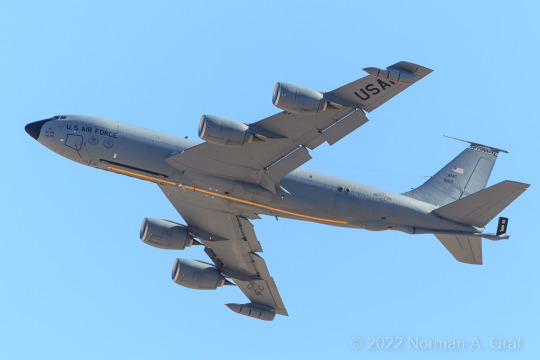
A Boeing KC-135R Stratotanker of the 22d Air Refueling Wing from McConnell Air Force Base heads out to the ranges to refuel aircraft participating in Red Flag 13-3 exercises at Nellis Air Force Base. In addition to refueling U.S. Air Force jets via the tail-mounted refueling boom, this aircraft is equipped with the Multi-Point Refueling System (MPRS) which adds an Mk.32B inflight refueling pod to each wingtip. The pods allow refueling of U.S. Navy, Marine Corps and most NATO tactical jet aircraft via a probe and drogue system.
53 notes
·
View notes
Text
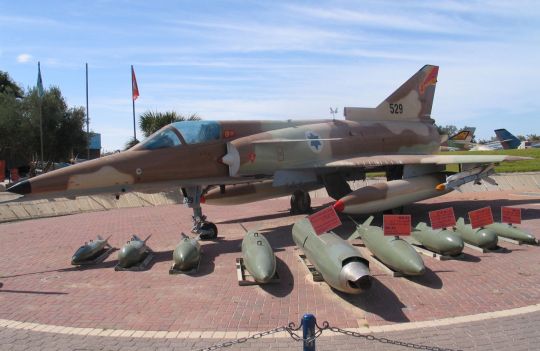
-An Israel Aircraft Industries Kfir C2 at the Muzeyon Heyl ha-Avir (Israeli Air Force Museum), Hatzerim Air Base, Israel, in 2006. | Photo: Bukvoed
FLIGHTLINE: 185 - ISRAELI AIRCRAFT INDUSTRIES KFIR ("LION CUB")
Developed from the IAI Nesher, itself an unlicensed copy of the Dassault Mirage 5, the Kfir served with the IAF as well as several export countries.
In the early 1960 the Israeli Air Force purchased a force of nearly four dozen Dassault Mirage IIIC aircraft, mainly fighter variants, along with a few configured for recon and four two-place trainers. The Mirage was the first Mach-2 aircraft in the IAF, and served throughout the Sixties as the backbone of the force. The Israelis were disappointed in the range of the IIIC however, which reduced the usefulness of the plane in the ground-attack role. Dassault responded by developing the Mirage 5, a fair-weather nuclear-capable version which had a longer range. By the time Dassault completed the IAF's order however, changing political winds in France saw an embargo placed on Israel, and the 50 Mirage Vs ordered wound up in the French Air Force instead.
Undeterred, a copy of the Mirage 5 was produced by Israeli Aircraft Industries as the IAI Nesher using plans and specifications acquired from other Mirage users as well as plans for the 5 acquired by espionage. The Nesher wasn't quite the plane the IAF needed, however, and IAI set about developing a better version. In addition to improving the aerodynamics of the design, a more powerful engine was sought, and two were selected for trials: the GE J79 turbojet and the Rolls-Royce Spey turbofan. Despite the Spey being more powerful, the J79 was chosen and a license agreement signed by Beit Shemesh Engines Ltd. to produce the engine in Israel. The design was altered to accommodate the larger jet, with the aft fuselage shortened and widened, with larger intakes fitted to the front, and an auxiliary intake was added to the tail fin to admit extra air to cool the afterburner. A titanium heatshield was added as well. The prototype, codenamed the Ra'am B ("Thunder B") took it's maiden flight in June 1973. The Ra'am had a redesigned cockpit as well as strengthened landing gear, reconfigured fuel tanks which increased capacity to 713gal total, and small canard foreplanes added above and behind the intakes. The Ra'am B also had a large percentage of domestic avionics.
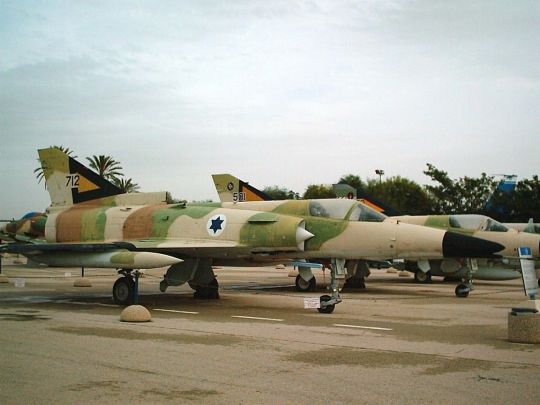
-A Kfir C.1 at the IDF/AF Museum. | Photo: Eranb
The Ra'am B was approved for production and was now called the Kfir ("lion cub") C.1. The Kfir, like the Ra'am B and Mirage 5 before it, had a delta wing with a wingspan of 8.22m, while the aircraft was 15.65m long and 4.55m tall. Empty weight was 7,285kg, while the max TO weight was 16,200kg. The J79-J1E turbojet, which produced 11,900lb thrust (17,900lb with afterburner) pushed the Kfir to a maximum speed of Mach 2.3, a service ceiling of 17,680m, and a combat range of 768km (carrying seven bombs, two missiles and two drop tanks). Armament consisted of two 30mm DEFA cannon with 140 rounds per gun, while stores could be up to 5,775kg of unguided SNEB or Matra JL-100 rocket pods, AIM-9 or locally produced Shafrir or Python AAMs, Shrike anti-radiation missiles, AGM-65 guided missiles, or a variety of unguided or guided bombs, including specialty weapons like the TAL series of cluster bombs and the Matra Durandal anti-runway munition. The Kfir could also be fitted with reconnaissance pods.

-Orthograph of the Kfir. | Illustration: Marcin Zieliński
The first C.1 were delivered to the 101st "First Fighter" Squadron in 1975, and served as the IAF's primary air superiority plane, flying alongside the McDonnnell F-4, which had by then been acquired from the US. The C.1 was swiftly followed by the improved C.2 variant, which had dogtoothed leading edges, small strakes under the nose and more highly swept canards. The C.2 was the first version to see combat, participating in an airstrike against a training camp near Tel Azia, Lebanon on 9 November 1977. Two years later, another C.2 gained the Kfir's only air-to-air kill, shooting down a Syrian MiG-21. During the 1982 Israeli invasion of Lebanon the Kfirs had ceded the air superiority role to the F-15 and F-16, and so they were mainly used for strike missions, often flying unescorted. Beginning the following year, the Kfir C.2 were updated to C.7 standards, which included an uprated J79 engine, two additional pylons under the wings, a new Elta El/M-2021B radar, an updated cockpit featuring hands-on-throttle-and-stick (HOTAS) controls, an inflight refueling probe and larger canards. A trainer version, the two-seat TC.7, was also developed. Despite the Kfir's abilities, the availability of the superior F-15I Ra'am and F-16I Sufa led to the type's retirement in the mid-1990s.

-An Israeli C.7 in flight. | Photo: Israeli Air Force
FOREIGN SERVICE
Despite being manufactured in Israel (under license), the Kfir's use of the J79 means that sales of the fighter are subject to approval by the US State Department. Despite this, the Kfir has been exported to several countries. The first client was Ecuador, which purchased twelve ex-IAF Kfir, ten C.2 and two TC.2 trainers, in 1981, which were delivered to the FAE in 1982-83. The Kfir saw action in the 1995 conflict between Ecuador and Peru, where they acted as escorts for the Ecuadorian A-37s. On 10 February 1995, an Ecuadorian C.2 shot down a Peruvian A-37, scoring the FAE's only kill with the type to date. In 1996 three more C.2 and a third TC.2 were acquired. A third purchase of eight of the newly developed C.10 model was blocked by the US, but a second option to purchase two C.10 and upgrade some or all of the existing fleet of C.2 to the same standard was approved. The C.10 is broadly similar to the C.7 in capacity, but is tailored for export, and has both helmet-mounted display and two multi-function displays in the cockpit. The C.10, also known as the CE by the FAE, also has the ability to fire upgraded Python 3 and 4 IR missiles. As of 2005, four of Ecuador's Kfir are known to have been lost in accidents, three fighters and one of the TC.2s.

-Three FAE aircraft, a C.2, Mirage F.1 and Jaguar (l-r), during the BLUE HORIZON exercise in 1986. | Photo: USAF
The US Navy and USMC leased a force of 25 C.1 between 1985 and 1989, these aircraft were officially designated the F-21A Lion and were used by Navy Fighter Squadron 43 (VF-43) at NAS Oceana, Virginia and Marine Fighter Training Squadron 401 (VMFT-40) at MCAS Yuma, Arizona for dissimilar air combat training. The F-21A were painted in schemes commonly worn by Warsaw Pact aircraft, specifically the MiG-23, which was then seeing widescale introduction, and whos performance the Kfir/Lion largely matched. The USN and USMC Lions were modified with the addition of narrow-chord canards and two strakes on either side of their noses, both of which improved low-speed maneuverability and handling. The US Navy F-21A were returned to Israel in 1988 and were replaced by the F-16N, while the USMC F-21 were returned in 1989 and were replaced by F-5E Tiger IIs, although these were not as capable as the Lions.

-One of VF-43's F-21A in flight over the desert in 1985. | Photo: US Navy
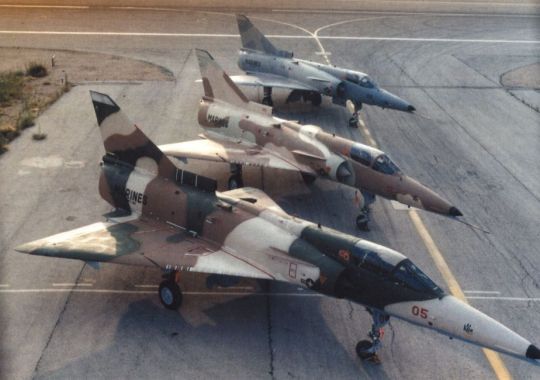
-Three Marine F-21 of VMFT-401, showing the variety of paint schemes worn during DACT. | Photo: USMC
In addition to the USN/USMC F-21s, six ex-IAF Kfir were purchased by Airborne Tactical Advantage Company of Newport News, VA to serve as aggressor aircraft in training by US Navy, USAF and Air National Guard units. ATAC also flies Mirage F.1s, Hawker Hunters, A-4 Skyhawks and L-39 Albatroses. One of ATAC's Kfir crashed at NAS Fallon on 6 March 2012, killing the pilot.

-An ATAC Kfir at the NAS Oceana air show in 2008. This aircraft, registration N404AX, crashed in 2012. | Photo: Justin Gibb
The Colombian Air Force (FAC) acquired 12 ex-IAF Kfir C.2 and one TC.2 in 1989, which were upgraded to C.7 standards and which saw use in counter-insurgency missions in the late 80's and 90's. A deal for twenty-four more aircraft was signed in 2008. These ex-IAF C.7 were upgraded to C.10 or C.12 standards (the C.12 is largely similar to the C.10, but lack radar) before deliveries began in 2009. FAC's existing C.2s were also upgraded under the same deal. On 1 November 2013 two Russian Air Force Tu-160 Blackjack bombers took off from Simon Bolivar Airport in Venezuela and crossed into Colombian air space, where they were intercepted and escorted out by FAC Kfirs. In 2017 FAC's C.10s were upgraded to EL/M 2052 AESA radar, which allows the planes to fire the I-Derby-ER, an extended range variant of its Derby FAF (fire-and-forget) active-radar missile as well as the advanced Python-5 beyond-visual-range (BVR) IR missile. As of 2019 23 of FAC's Kfir remain in service.
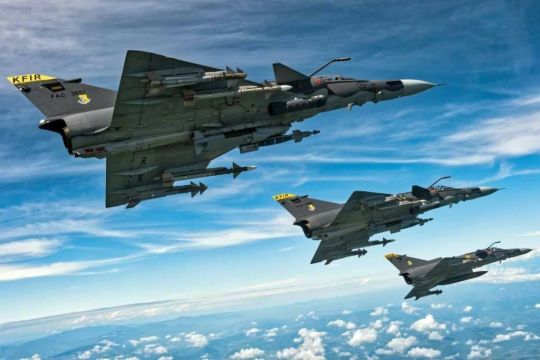
-Three FAC Kfir in flight. The aircraft are carrying a mixed load of Python and Derby missiles as well as a LGB and desginator as well as a drop-tank. | Photo: FAC
Between 1995 and 2005 the Sri Lankan Air Force acquired ten C.2, one TC.2 and four C.7, all ex-IAF aircraft. The SLAF Kfir saw action against LTTE rebels during the long-running Sri Lankan civil war, during which time two C.7 were destroyed by rebels on the ground in 2001, and three more to training accidents. In 2011, two Kfir collided in midair during a practice session for an airshow. In June 2021 the SLAF finalized a contract to upgrade five of their Kfir and return them to service.
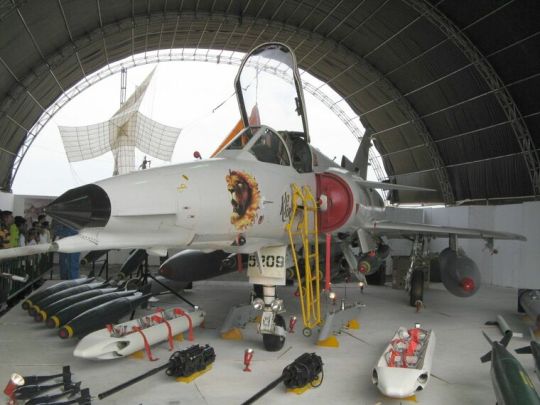
-A Kfir C.2 of the No.10 Squadron on display during an airshow/open house in 2011. | Photo: Chamal Pathirana
NO LONGER "CUBS"
Even today, IAI continues to develop and offer upgrades of the Kfir. The Block 60 are existing aircraft which have undergone extensive refurbishment, essentially returning them to zero airframe and powerplant hours. The Block 60 also incorporate the EL/M-2032 AESA radar, which gives look-down/shoot-down capability as well as tracking of up to 64 targets. Finally, Block 60 aircraft feature an open-source architecture, allowing clients to tailor the avionics to their needs and sources. Colombia has expressed interest in upgrading their aircraft, and other Block 60s have been offered to Bulgaria and Argentina.
Colombia, Ecuador and Sri Lanka have also been offered the Kfir NG (Next Generation), which can be either refitted older Kfir or new-build aircraft, powered by a GE-414 which is lighter, smaller and more fuel-efficient but more powerful than the J79 it replaces, allowing the Kfir NG to carry an additional kiloliter of fuel. The wing is also upgraded with new slats and fly-by-wire technology. Upgrades to the radar include the same EL/M-2052 AESA as the C.10, as well as the open system architecture and cockpit of the C.10 and Block 60.
#aircraft#aviation#avgeek#airplanes#airplane#cold war#cold war history#coldwar#aviation history#usaf#iaf#idf#israeli air force#israeli defense forces#israel#iai#dassault#Ecuador#colombia#sri lanka#peru
13 notes
·
View notes
Text

Why did the SR 71 have to refuel immediately after takeoff? I found the answer in an interview with Rich Graham. It was so the SR-71 could accelerate past Mach 2.6
Many people believe we refueled after takeoff because the aircraft leaked fuel so profusely that we needed to fuel up quickly,” says Col. Richard H. Graham, a former Blackbird pilot, in his book SR-71 The Complete Illustrated History of THE BLACKBIRD The World’s Highest, Fastest Plane. “We had to refuel right after takeoff for only one reason, and it wasn’t because we leaked JP-7 fuel on the ground. Yes, the plane does leak fuel, but not enough to require refueling after takeoff. “The aircraft had three liquid nitrogen Dewar flasks containing 260 liters of liquid nitrogen located in the nose wheel well.
The only way to ensure 100 percent inert atmosphere in each fuel tank was to refuel the plane inflight completely full of JP-7, allowing ambient air in each fuel tank to vent overboard. Once full of fuel, gaseous nitrogen would now dominate each fuel tank’s empty space above as it burned off JP-7. The nitrogen gas pressurized each fuel tank to 1.5 psi above ambient pressure and inerts the space above the heated fuel to prevent autogenous ignition.
This is why we refueled after takeoff. Then we could safely accelerate beyond Mach 2.6.”
Posted by Linda Sheffield
@Habubrats71 via X
#sr 71#sr71#sr 71 blackbird#blackbird#aircraft#usaf#lockheed aviation#skunkworks#mach3+#habu#aviation#reconnaissance#cold war aircraft
21 notes
·
View notes
Video
McDonnell RF-101C-45-MC "Voodoo" (s/n 56-0178) of the 20th Tactical Reconnaissance Squadron (TRS) by Robert Sullivan Via Flickr: McDonnell RF-101C-45-MC "Voodoo" (s/n 56-0178) of the 20th Tactical Reconnaissance Squadron (TRS) undergoing inflight refuelling. This aircraft later served with the 15th TRS in Viet Nam, and crash landed at Da Nang AFB due to battle damage on October 5th, 1965.
4 notes
·
View notes
Video
Watch Amazing A10 Thunderbolt Inflight Refueling #Aviation #Fly #AeroArd...
0 notes
Text
BUSINESS CLASS FLIGHTS TO ABU DHABI
It has never been such a feeling of accomplishment even for frequent flyers, who have been travelling internationally for work on Business Class Flights to Abu Dhabi. After the restrictions were lifted, the travel to UAE has become better amidst some precautionary measures by the UAE authorities, but they are in place to benefit everyone. The flights that operate from the USA to UAE, many catch them from New York to Abu Dhabi because it works well in the favour of the business class travellers from America.

Significantly, the business people who want to have a good time balancing work and pleasure in an American Metropolitan city that offers almost everything; New York is the place to start with. Furthermore, landing in Abu Dhabi is better than landing anywhere else in the UAE because of the cultural comfort and work convenience. Other than New York, there are other international airports in the USA, from where direct flights to Abu Dhabi flies.
Seattle:The major commercial airport serving the Seattle metropolitan area in the United States is Seattle-Tacoma International Airport, which is also known as Sea-Tac Airport or Sea-Tac. It is situated 14 miles south of Downtown Seattle and 18 miles north-northeast of downtown Tacoma in the city of SeaTac. Many direct flights and connecting flights fly from here to UAE and specifically to Abu Dhabi.
Chicago:O'Hare International Airport, which is also known as the O'Hare Airport, is located in Chicago, Illinois. O'Hare International Airport, or simply O'Hare, is a major international airport in Chicago, Illinois, located 14 miles (23 kilometres) northwest of the Loop business district. O'Hare International Airport, which is operated by the Chicago Department of Aviation and spans 7,627 acres (3,087 ha), offers nonstop flights to 228 destinations throughout North America, South America, Europe, Africa, Asia, and Oceania. O'Hare started as an airfield serving a Douglas manufacturing plant for C-54 military transports during World War II, and was intended to be the successor to Chicago's Midway International Airport, dubbed the "busiest square mile in the world." E was the inspiration for the moniker. It was popularly named after Edward "Butch" O'Hare, the first Medal of Honor recipient for the United States Navy during the war. Out here, concourses, direct highway access to the terminal, jet bridges, and underground refuelling systems were all pioneered by O'Hare's innovative design as the first major airport scheduled after WWII.
San Francisco: San Francisco International Airport is a major international airport located 13 miles (21 kilometres) south of San Francisco, California. It serves destinations across North America and serves as a major gateway to Europe and Asia. San Francisco International Airport (SFO) is the largest airport in the San Francisco Bay Area and the second busiest in California after Los Angeles International Airport (LAX). If passenger traffic is accounted for, it was the seventh busiest United States airport and the 24th busiest in the world in 2017. It is United Airlines' fifth-largest hub, with operations in Terminal 3 and the International Terminal. United's main transpacific gateway is San Francisco International Airport.
Los Angeles: Los Angeles International Airport, abbreviated as LAX (pronounced with each letter separately), happens to be the primary international airport serving Los Angeles and the surrounding metropolitan area. LAX is in the Los Angeles suburb of Westchester, 18 miles (30 kilometres) southwest of Downtown Los Angeles, with Westchester's commercial and residential areas to the north, El Segundo's to the south, and Inglewood's to the east. Los Angeles International Airport is indeed the nearest airport to the Westside and the South Bay.
Why Business Class?
There are many categories a businessman may choose from when flying to a destination, such as the UAE. But preferring luxury is a good thing, primarily because of the distance that is covered in terms of time. The flight can take anywhere from 17 hours to 25 hours, with one or two stops in the middle for refuelling, changing crew and mechanical checking.
Facilities:Usually, all the business class flights from New York to Abu Dhabi get some really nice benefits. Such as chauffer driven pick-up and drop by the airlines, to th3e airport. Access to the luxury airport lounge, quick check-in and check-out with the assistance of a team of an entourage, luxurious separate cabin area while travelling, inflight entertainment, exclusive beverages of choice from the in-flight menu and variety of cuisine. And above everything else, being connected to the business over the internet while flying across the continents.
Comfort: Indeed, with the above facilities, the comfort of travelling in Business Class Flights to Abu Dhabi is excellent as expected. Also, it gives the true value for the money, and that is unbeatable because not every airline give a complete package to its luxury travellers. Only a few airlines who have A380 or Boeing 777 planes in their hanger can deliver it all. Flying to the other side of the globe without losing sleep is one of the major concerns of many business class travellers. With such cabin space and a reclining chair that could quickly turn into a flat-bed, sleep is part of the comfort delivered to business class travellers.

Indeed, the cost of booking a business class for travelling a long distance is a matter of the expense. But the facilities and comfort that one receives from spending money is worth the free time one gets to do multiple things for compensating the expenditure on the business class travel.
Flight From the USA To Abu Dabi
The prominent airlines that are based out of the UAE and operate across the globe are mentioned below. They have the reputation of catering to the business class travellers and giving more value of money spent on the tickets, in comparison to other airlines.
Egypt Air
Etihad
Emirates
Qatar Airways
Turkish Airlines
Flight From United States to Abu Dhabi FAQ
What is the cost of airline tickets to Delhi from the United States?
Every month, the cost of airline tickets on Business Class Flights to Abu Dhabi from the USA changes. Hence, one has to be attentive to the upcoming flight deals and book your tickets accordingly.
How many direct flights from the United States to Abu Dhabi are available per day?
Visit the BookOTrip website to learn about direct flights from the United States to Abu Dhabi and make easy flight reservations.
Where can I catch a flight from the United States to Abu Dhabi?
The major airports in the United States for boarding the USA to Abu Dhabi flight are JFK Airport, Chicago Airport, Washington Airport, New York Airport, and San Francisco Airport.
How long does it take direct flights from the United States to Abu Dhabi to arrive at their destination?
The time it takes direct flights from the United States to Delhi to arrive at their destination is determined by the flights with which the passengers have made their reservations.
What is the business flight rate from the United States to Abu Dhabi?
Check the BookOtrip website for the best deals on flights to Abu Dhabi from the United States.
When is the right time to book a flight from the United States to Abu Dhabi?
The best months to book a flight from the United States to Abu Dhabi are November, December, February, and March.
What are the most popular airlines for business class flights from the United States to Abu Dhabi?
Egypt Air, Etihad, Emirates, Qatar Airways, and Turkish Airlines are the most popular airlines that fly to Abu Dhabi from the United States.
How is the weather in Abu Dhabi these days?
January, March, April, May, June, July, August, September, October, November, and December are all dry months in Abu Dhabi. August is the hottest month, with average maximum temperatures of 43°C (109°F). With an average maximum temperature of 24°C (75°F), January is the coldest month.
How large has Abu Dhabi's population grown in recent years?
According to a recent census, the urban area of Abu Dhabi had a population of 1.48 million people, out of a total population of 2.9 million in the emirate of Abu Dhabi.
Could you tell me about the different modes of local transportation available in Abu Dhabi?
In the UAE, taxis and buses aren't the only modes of transportation. In Abu Dhabi, commuting by Abras or ferries is also very common. The Abu Dhabi ferry service caters to both pedestrians and cars.
It is always recommended to have the Business Class Flights to Abu Dhabi booked through a travel agency rather than doing it independently. It saves much of a hassle if there is a change in plan or the flight get cancelled or delayed. An agent would promptly take care of the needful, and the traveller has to carry on with their business as usual.

1 note
·
View note